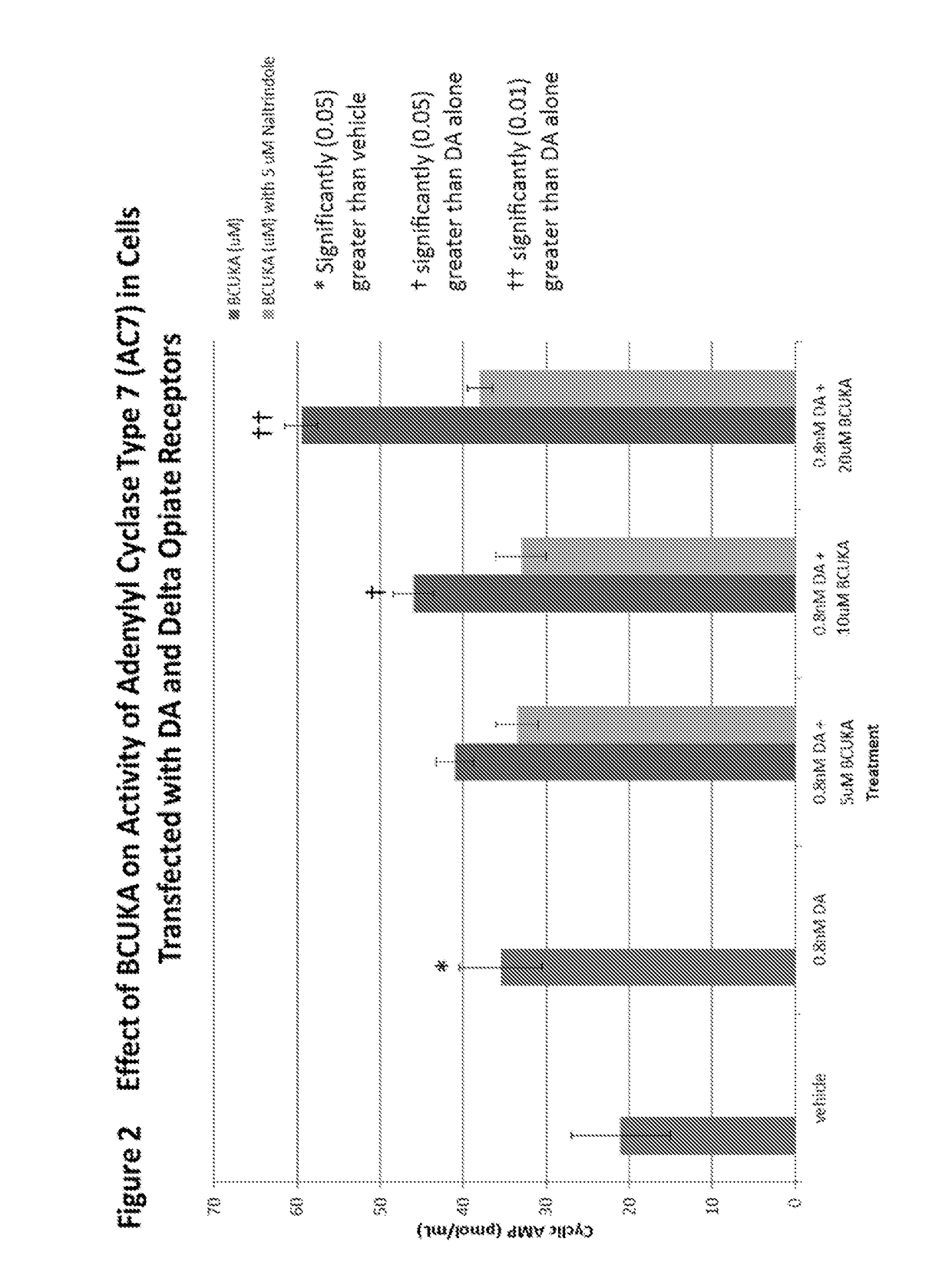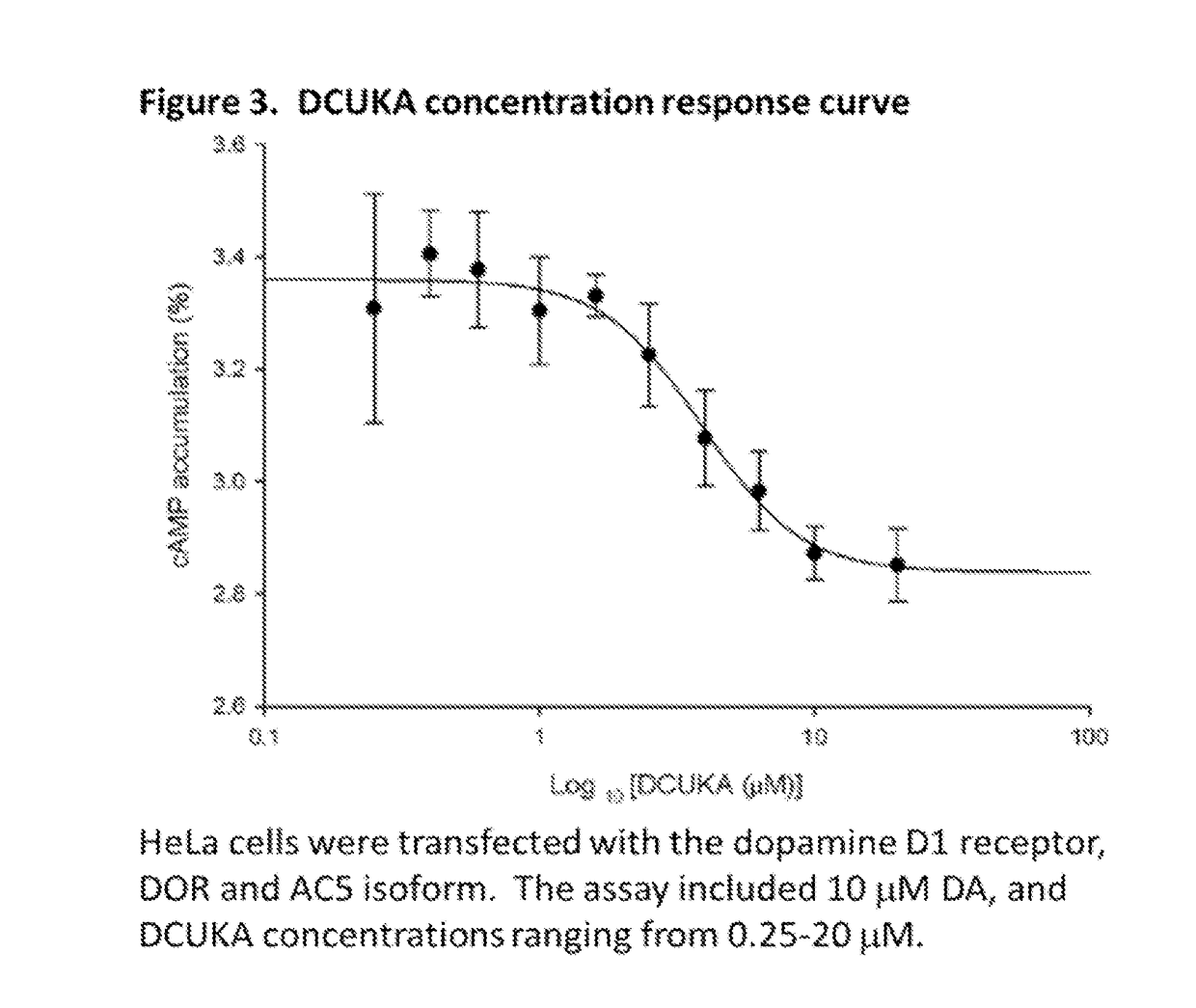Multifunctional aminoquinoline therapeutic agents
a multi-functional, aminoquinoline technology, applied in the field of aminoquinoline compounds, can solve the problems of drastic decline in the approach to generating novel medications, and achieve the effect of preventing the development of chronic (neuropathic) pain
- Summary
- Abstract
- Description
- Claims
- Application Information
AI Technical Summary
Benefits of technology
Problems solved by technology
Method used
Image
Examples
example 1
on of Compounds of Formula (VI)
[0098]Derivatives of kynurenic acid containing a tertiary ureido group, including 5,7-dichloro-4-(3,3-diphenylureido)quinoline-2-carboxylic acid (DCUKA, 7a), may be synthesized, as previously described (Snell et al., 2000) through the use of a reactive carbamoyl chloride intermediate (6a-b). However, it is possible to achieve an improvement on this synthesis due to concomitant ester hydrolysis during the final acylation reaction. One compound embodiment, 5,7-dichloro-4-(3,3-dibutylureido)quinoline-2-carboxylic acid (BCUKA, 7b), was synthesized via this method in the synthesis phases I-IV as explained and illustrated in Scheme 2 (Reagents and conditions (I): MeOH, reflux, 16 h. (II): Ph2O, 250° C., 2 h. (III): (a) ClSO2NCO, MeCN, reflux, 2 h. (b) HCl, MeOH, RT, 30 min. (IV): NaH, DMF, 0° C. to RT, 16 h).
[0099]3,5-Dichloroaniline (1, 5.00 g, 30.9 mmol) and dimethyl acetylenedicarboxylate (2, 3.80 ml, 30.9 mmol) were combined in anhydrous...
example 2
DCUK Compounds on Ligand Binding to Delta Opiate Receptor, Cannabinoid CB1 Receptor and GABA-A Receptor and Other Neurotransmitter Receptors, Ion Channels and Transporters
[0120]This example compares the effect of DCUKA, BCUKA, or DCUK-OEt on the binding of ligands defining the delta opiate receptor, the cannabinoid CB1 receptor, and the agonist and benzodiazepine sites on the GABA-receptor, as well as other receptors and neurotransmitter transporters, performed using membrane preparations from cultured cells or from rat brain.
[0121]These assays were performed by the Psychoactive Drug Screening Program (PDSP) (NIMH). Detailed methods can be found at the PDSP website PDSP(dot)med(dot)unc(dot)edu / pdspw / binding(dot)php. Table 1 is taken from the PDSP website, as well as the lists the cell lines used for binding assays in Tables A, B, and C. The following brief description, including Tables 1, A, B, and C, is quoted from the website.
[0122]“To make membrane fractions from stably transfect...
example 3
DCUKA, BCUKA and DCUK-OEt on Delta Opiate Receptor or Cannabinoid CB1 Receptor Function
[0127]This example illustrates the effect of DCUK compounds on cyclic AMP production in cells (HeLA or HEK293) transfected with the cannabinoid CB1 receptor or the delta opiate receptor, dopamine D1 receptor, and Type 5 adenylyl cyclase or Type 7 adenylyl cyclase.
[0128]HeLa cells and HEK293 cells were obtained from American Type Culture Collection (Manassas, Va.). Cells were cultured in flasks (225 cm2) containing 39 ml of MEM containing 10% fetal bovine serum, penicillin (50 μg / ml), streptomycin (50 μl), and neomycin (100 μg / ml). The flasks were maintained in a humidified atmosphere of 95% air and 5% CO2 at 37° C. Transfection was performed by the method of DNA precipitation with calcium phosphate (Chen and Okayama, 1987) 1 day after HeLa cells or HEK293 cells were transferred to small flasks (75 cm2) at the density of approximately 60 to 80% confluence. Plasmid DNA containing adenylyl cyclase (A...
PUM
 Login to View More
Login to View More Abstract
Description
Claims
Application Information
 Login to View More
Login to View More - R&D Engineer
- R&D Manager
- IP Professional
- Industry Leading Data Capabilities
- Powerful AI technology
- Patent DNA Extraction
Browse by: Latest US Patents, China's latest patents, Technical Efficacy Thesaurus, Application Domain, Technology Topic, Popular Technical Reports.
© 2024 PatSnap. All rights reserved.Legal|Privacy policy|Modern Slavery Act Transparency Statement|Sitemap|About US| Contact US: help@patsnap.com










